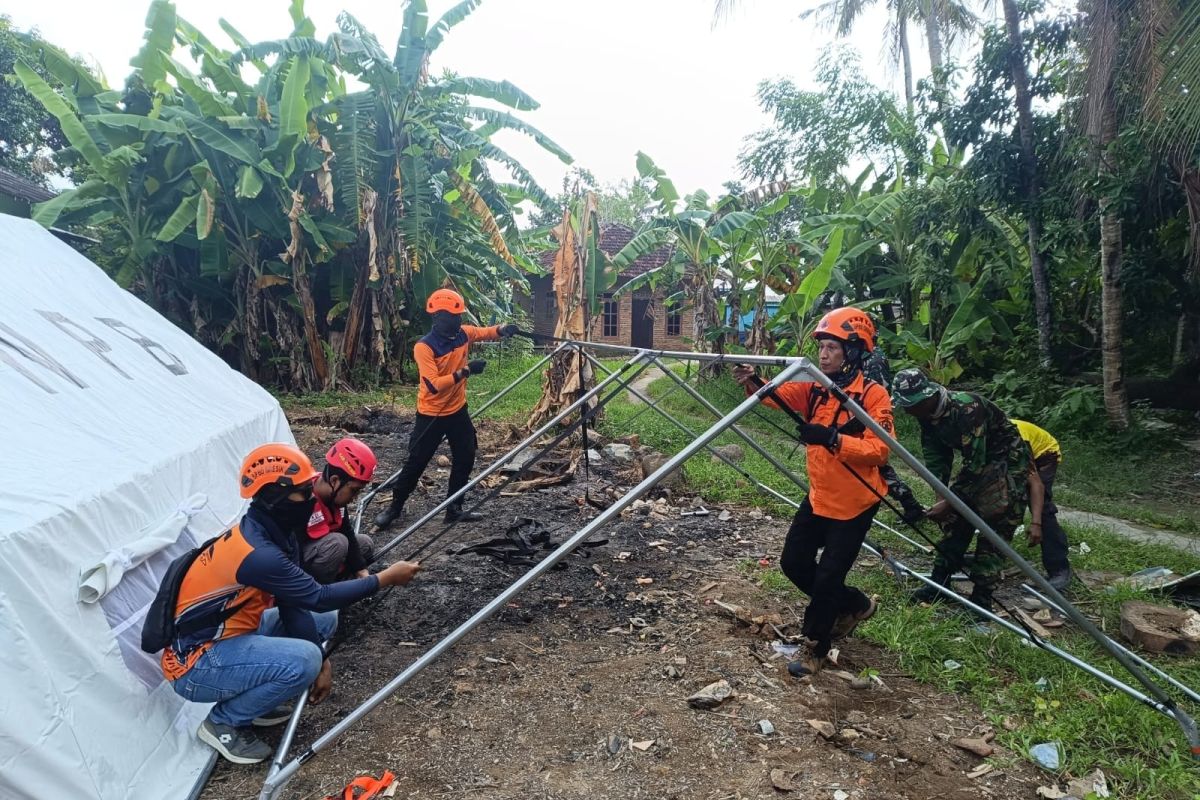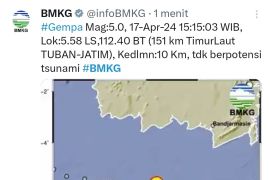As of Wednesday (March 27), the Meteorology, Climatology, and Geophysics Agency (BMKG) recorded 327 aftershocks since the 6.1-magnitude earthquake jolted the island on March 22.
"The ongoing aftershocks have made residents of Sangkapura and Tambak sub-districts prefer to stay outside rather than inside their homes," the agency's acting head, Gatot Soebroto, remarked here Wednesday.
The fear of aftershocks has triggered an increase in the number of residents taking refuge, he noted, adding that as of 6 p.m. local time on Wednesday, the total number of displaced residents was recorded at 34,049.
They comprise 10,460 children, 18,599 adults in the age bracket of 17-55 years, and 5,030 elderly people. To meet their accommodation needs, more tents have been provided by local authorities, he revealed.
"The tents are not only for displaced persons and families but also for public kitchens," Soebroto stated.
The recent earthquake not only caused damage in 17 villages of Sangkapura Sub-district and 13 villages of Tambak Sub-district in Bawean Island but also affected the districts of Tuban, Bojonegoro, Lamongan, Sidoarjo, and Pamekasan, as well as Surabaya City.
According to the BPBD, the quake damaged 6,053 houses, 91 school buildings, six hospitals, eight Islamic boarding schools, 26 office buildings, 187 houses of worship, a livestock cage, and three motorcycles.
ANTARA reported earlier that following the 6.1-magnitude earthquake in Tuban District, East Java, at around 11:22 a.m. local time, on March 22, the BMKG recorded 149 aftershocks between March 22, 2024, and March 23.
The epicenter of the quake was located about 132 kilometers northeast of Tuban, at a depth of 10 km, while the magnitude of two of the 149 aftershocks was recorded at 5.9 and 6.4.
According to the BMKG, the epicenters of the 5.9 and 6.4 magnitude aftershocks were located about 36 km west of Bawean Island and 126 km from Tuban City.










